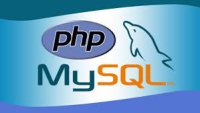
To install MySQL and PHP on Windows, you can follow these steps:
Step 1: Install MySQL
-
Download MySQL Installer:
- Go to the MySQL Community Downloads page.
- Download the MySQL Installer for Windows.
-
Run the Installer:
- Launch the downloaded installer.
- Choose the "Developer Default" setup type to install MySQL Server and other tools.
-
Follow the Installation Steps:
- Accept the license agreement.
- Choose the MySQL Server version you want to install.
- Configure the server (set the root password and other options).
- Complete the installation.
-
Verify MySQL Installation:
-
Open Command Prompt and type
mysql -u root -pto log in to MySQL. Enter the root password you set during installation.
-
Open Command Prompt and type
Step 2: Install PHP
-
Download PHP:
- Go to the PHP for Windows page.
- Download the latest Non-Thread Safe (NTS) version of PHP (the zip file).
-
Extract PHP:
-
Extract the downloaded zip file to a directory (e.g.,
C:\php).
-
Extract the downloaded zip file to a directory (e.g.,
-
Configure PHP:
-
Rename
php.ini-developmenttophp.ini. -
Open
php.iniin a text editor and configure the necessary settings (like enabling extensions).
-
Rename
-
Add PHP to the System Path:
- Right-click on "This PC" or "My Computer" and select "Properties."
- Click on "Advanced system settings" and then "Environment Variables."
- Find the "Path" variable in the "System variables" section and click "Edit."
-
Add the path to your PHP directory (e.g.,
C:\php).
-
Verify PHP Installation:
-
Open Command Prompt and type
php -vto check if PHP is installed correctly.
-
Open Command Prompt and type
Step 3: (Optional) Install a Web Server
For PHP to run, you may want to install a web server like Apache or Nginx. Alternatively, you can use XAMPP or WAMP, which bundle Apache, MySQL, and PHP together for easier installation.
Step 4: Test PHP with MySQL
-
Create a simple PHP file (e.g.,
test.php) in your web server's root directory with the following content:<?php $conn = new mysqli('localhost', 'root', 'your_password', 'your_database'); if ($conn->connect_error) { die("Connection failed: " . $conn->connect_error); } echo "Connected successfully"; ?> -
Access this file through your web browser to see if it connects to MySQL successfully.
Conclusion
Following these steps will help you set up MySQL and PHP on your Windows machine. If you encounter any issues, make sure to check the official documentation for MySQL and PHP for troubleshooting tips.


